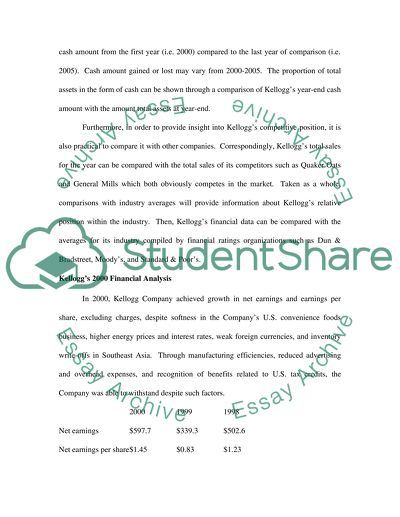Cite this document
(Kelloggs Financial Statement Analysis 2000-2005 Case Study Example | Topics and Well Written Essays - 4750 words, n.d.)
Kelloggs Financial Statement Analysis 2000-2005 Case Study Example | Topics and Well Written Essays - 4750 words. https://studentshare.org/finance-accounting/1533846-financial-analysis-of-kelloggs
Kelloggs Financial Statement Analysis 2000-2005 Case Study Example | Topics and Well Written Essays - 4750 words. https://studentshare.org/finance-accounting/1533846-financial-analysis-of-kelloggs
(Kelloggs Financial Statement Analysis 2000-2005 Case Study Example | Topics and Well Written Essays - 4750 Words)
Kelloggs Financial Statement Analysis 2000-2005 Case Study Example | Topics and Well Written Essays - 4750 Words. https://studentshare.org/finance-accounting/1533846-financial-analysis-of-kelloggs.
Kelloggs Financial Statement Analysis 2000-2005 Case Study Example | Topics and Well Written Essays - 4750 Words. https://studentshare.org/finance-accounting/1533846-financial-analysis-of-kelloggs.
“Kelloggs Financial Statement Analysis 2000-2005 Case Study Example | Topics and Well Written Essays - 4750 Words”. https://studentshare.org/finance-accounting/1533846-financial-analysis-of-kelloggs.


